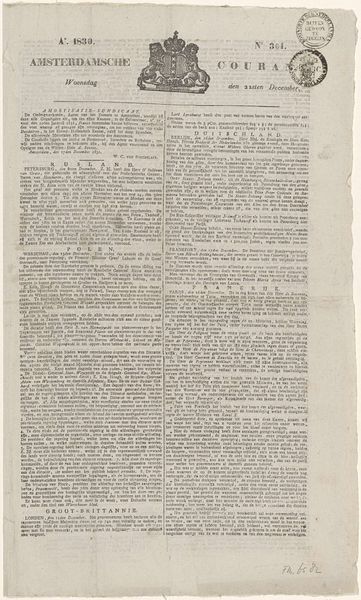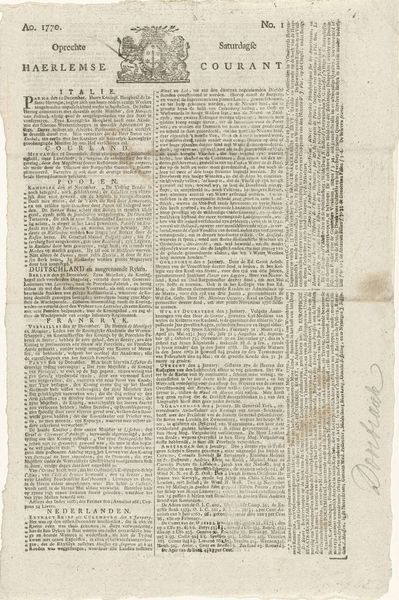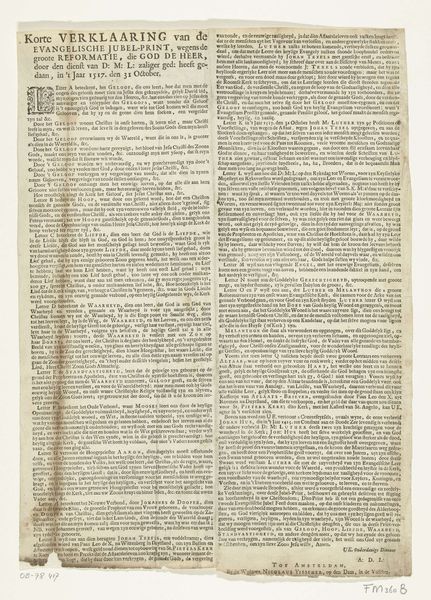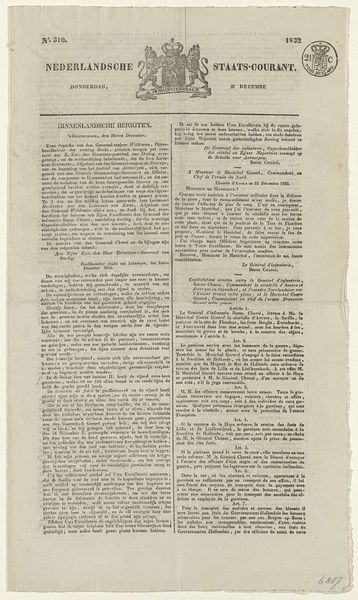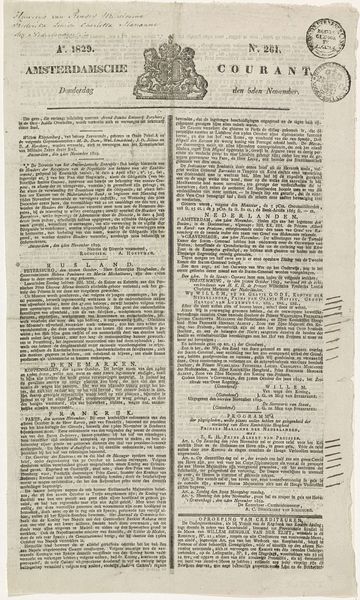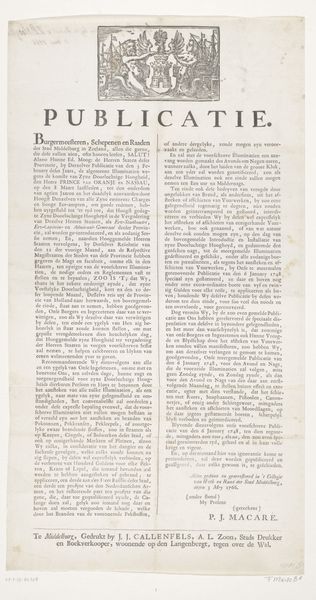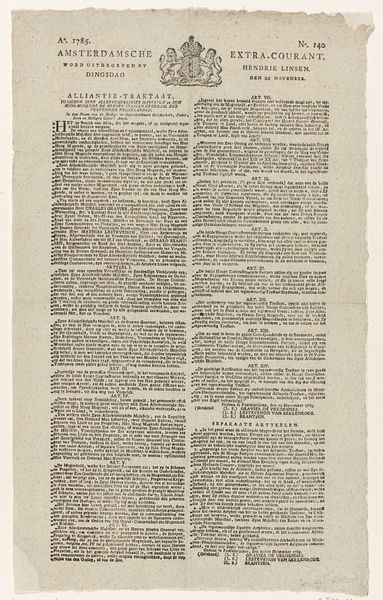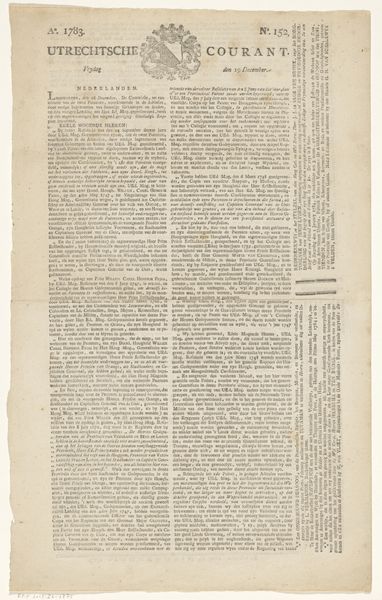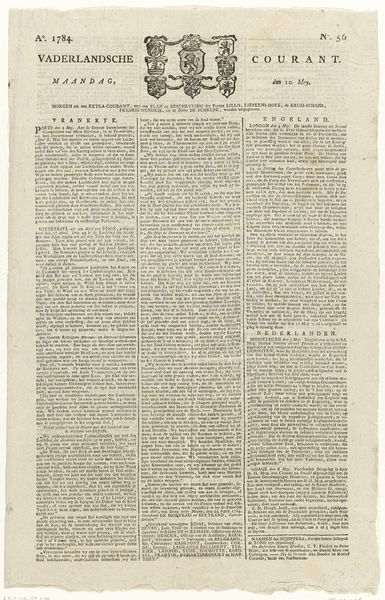
print, textile, paper, typography
#
hand-lettering
#
dutch-golden-age
# print
#
hand drawn type
#
hand lettering
#
textile
#
paper
#
typography
#
pen work
Dimensions: height 445 mm, width 270 mm
Copyright: Rijks Museum: Open Domain
Curator: This fascinating artifact is the *Arnhemsche Courant*, dating possibly to 1814 and attributed to A. van Goor. It’s a striking example of early 19th-century news dissemination. Editor: It’s rather austere, isn't it? The tight columns of text and somewhat distressed paper evoke a strong sense of history and gravitas. The visual weight definitely lies in the typography itself. Curator: Indeed. This piece is more than just a simple news bulletin; it is deeply interwoven with the socio-political context of its time. The *Arnhemsche Courant* provided a crucial source of information during a period of immense upheaval and transformation in the Netherlands, playing a role in shaping public opinion during and after the Napoleonic era. Editor: From a purely visual perspective, I'm drawn to the contrast between the dense body of text and the header featuring what appears to be a coat of arms. There is an elegant pen work in these sections that punctuates the visual rhythm of the print. Curator: That coat of arms is symbolic, reflecting the complex power dynamics and shifting national identities. This newspaper wasn't just reporting events, it was participating in the construction of a new national narrative. Examining this edition gives us insight into the news selected for distribution and how narratives were framed during this volatile era. We can decode a sense of restored or longed-for national identity in its pages. Editor: The sheer density of the text, while challenging to modern eyes, speaks volumes about the value placed on information and literacy at the time. Look at how the typographic choices affect readability! Curator: Exactly. Consider the intended audience; literacy was limited. Therefore, this text served as a crucial connection point for elites and those shaping policies affecting broader society. Each choice—from what events to cover, to how it’s worded—reflects these interests, highlighting social power and its impact on ordinary lives during times of war, national crisis and reconstruction. Editor: So, ultimately, while history unfolds in its contents, form, design, and even material condition provide a fascinating textual study. Curator: Precisely, viewing the *Arnhemsche Courant* prompts critical reflection on the power dynamics of its era. Editor: It really showcases the lasting interplay of aesthetics and information, demonstrating design can underscore a historical moment with extraordinary impact.
Comments
No comments
Be the first to comment and join the conversation on the ultimate creative platform.
